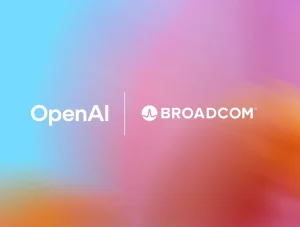-
The AI race is getting even more intense as OpenAI joins forces with Broadcom to supercharge its model training and infrastructure here’s what it means for the future of artificial intelligence.
In a bold move that’s shaking up the tech world, OpenAI has partnered with Broadcom in a deal designed to accelerate AI innovation through advanced chip and infrastructure development.

The partnership comes at a crucial time when AI models are growing exponentially in both complexity and demand for computing power. With Broadcom’s expertise in custom silicon and networking technologies, OpenAI aims to create faster, more efficient, and scalable systems to power its next generation of AI models possibly even GPT-6.
Why This Matters
As AI continues to dominate every corner of the internet from content creation and automation to healthcare and robotics the real bottleneck isn’t creativity, it’s computing power.
Training large-scale AI models like ChatGPT requires massive amounts of energy and specialized hardware. By teaming up with Broadcom, OpenAI is essentially taking control of its AI supply chain, reducing reliance on third-party chipmakers, and optimizing hardware performance for its unique workloads.
What the Partnership Includes
While details remain limited, industry insiders suggest that Broadcom will work closely with OpenAI to design custom accelerators and AI-optimized networking solutions. This move could make OpenAI more self-sufficient, much like Google did with its Tensor Processing Units (TPUs).
It also signals a trend among major AI players from NVIDIA to Anthropic to seek partnerships or build their own silicon to cut costs and boost performance.
Read more; Nvidia Just Built Its First U.S. AI Chip — Here’s Why the Blackwell Launch Changes Everything
The Bigger Picture
This collaboration is more than just a hardware upgrade it’s a strategic move to dominate the AI infrastructure market.
Broadcom’s involvement could help OpenAI:
- Lower its cloud computing costs.
- Improve energy efficiency in data centers.
- Speed up the rollout of future AI models.
At the same time, this puts pressure on rivals like Google DeepMind, Meta, and Amazon, who are also investing heavily in AI-specific chips to keep up.
What It Means for the Future

If successful, the OpenAI-Broadcom partnership could usher in a new era of faster, smarter, and more affordable AI tools for consumers and businesses alike. From smaller AI startups to enterprise-level automation, the ripple effects will be felt across the tech ecosystem.
For everyday users, this might translate into:
- Cheaper AI access through lower compute costs.
- Smarter assistants that can handle complex, real-time tasks.
- Faster innovation cycles, with new AI models emerging more frequently.

Recent Comments